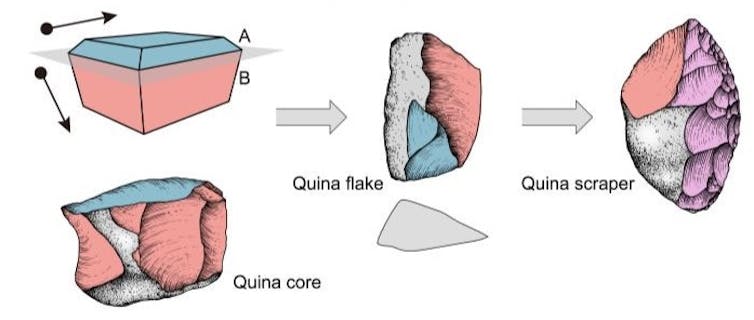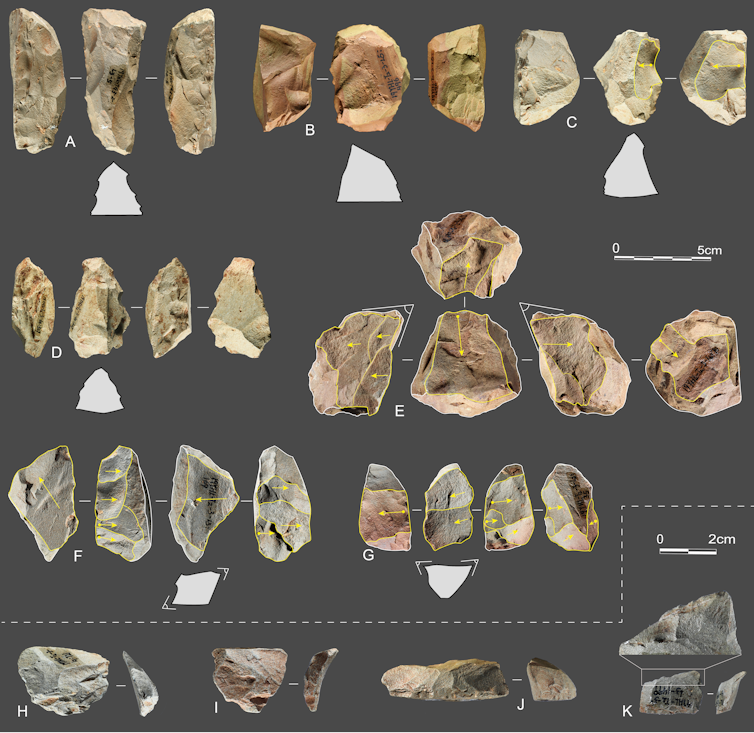New technologies today often involve electronic devices that are smaller and smarter than before. During the Middle Paleolithic, when Neanderthals were modern humans’ neighbors, new technologies meant something quite different: new kinds of stone tools that were smaller but could be used for many tasks and lasted for a long time.
Archaeologists like me are interested in the Middle Paleolithic – a period spanning 250,000 to 30,000 years ago – because it includes the first appearance of our species, our arrival into many parts of the world for the first time, and our invention of many new kinds of stone tools.

Illustration of a typical Quina scraper and related tools. The toolmaker would flake pieces of stone off the core to carefully shape the Quina scraper.
Pei-Yuan Xiao
In our study just published in the Proceedings of the National Academy of Sciences, a team of international collaborators and I describe our discovery in China of the first complete example of a Middle Paleolithic technology previously seen only in Europe and the Middle East.
Archaeologists have thought that ancient people in East Asia completely skipped the Middle Paleolithic. Our discovery challenges the long-standing notion that while ancient people in Europe and Africa were inventing new tools during this period, people of East Asia stuck to only the most basic tools that remained unchanged for thousands of years.

The Quina tool kit from Longtan. (A–D) Quina scrapers. (E–G) Quina cores. (H-J) Resharpening flakes showing Quina retouch at the near end of the top face. (K) Small tool made on resharpening flake.
Hao Li
Quina scrapers helped hunters process kills
The tool we’ve identified is called a Quina scraper. This type of stone tool is well known from archaeological sites in Europe and the Middle East.
Quina scrapers are typically quite thick and asymmetrical, with a broad and sharp working edge that shows clear signs of being used and resharpened multiple times. This shape results in durable cutting edges, ideal for long cycles of use followed by resharpening.
People used Quina scrapers to scrape and cut soft materials, such as meat and animal skins, and medium-hard materials, such as wood. We know this from tiny scratches and chips on the scrapers that match traces caused by working these materials in experiments using contemporary stone tools.
European archaeologists believe that Quina scrapers were invented to meet the needs of highly mobile hunters living in cool and dry climates. These hunters were focused on seasonal migratory prey such as reindeer, giant deer, horse and bison. Quina scrapers would have helped them process their kills into food and other resources – for example, to extract marrow.



